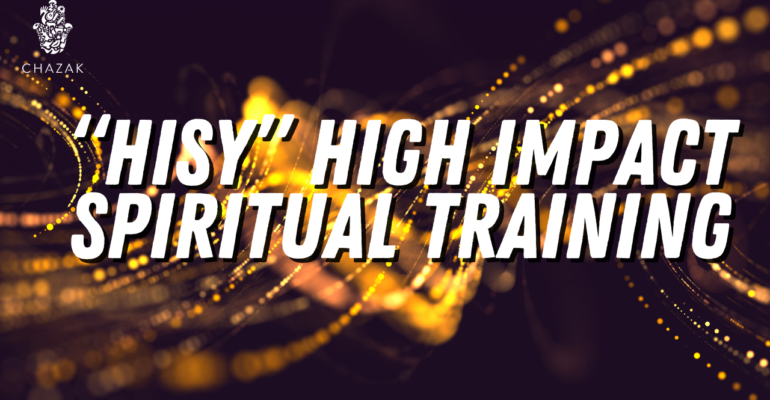by Rabbi Reuven Ibragimov Chazak NY
Athletes of any genre hit their peak somewhere before their 30th birthday. Thereafter, it’s all downhill. However, there is one exception to that rule, and this is the spiritual athlete. Spiritual athletes compete against no one, only themselves and their own potential which peaks much later in life.
The Torah informs us that Eisav was born nearly perfect in his physical appearance, whereas Yaakov, who was named by God Himself, attains perfection only in the later years (Akeiv) of his life. This is the nature of a spiritual journey – it begins small and modestly, then it grows, buds and blossoms, until it bursts into full bloom. Like good wine, a person’s greatest spiritual value comes after many years of slow maturation.
However, the physical strength of youth and good health is no less important. True success requires the fusion of both the mature and the youthful, the wise and the energetic, the rooted and the free-spirited.
Businesses that successfully partner the young with the mature have a unique advantage. Individuals can also achieve this edge by synthesizing their own maturity with a playful, adventurous youthfulness that it is so important to preserve throughout life. Appropriately blending the physical with the spiritual is the cornerstone of a life of Torah.
Energy has these same two components – the physical and the “spiritual”. On the one hand, there is fuel, a material resource of finite quantity that, like youth and physical power, fades with time. However, with regard to energy, it does not diminish. On the contrary, like the mountain fires in California, it grows in strength as long as it has fuel to nourish it.
Mitzvot are like that too. Mitzvot are finite and measured. Many of them can only be performed in specific times and places. Once we have used up our time on earth we have also used up our store of potential mitzvot. However, the energy we generate from the mitzvot we do is immeasurable. It is like a solid investment, it continues to grow exponentially in quality, strength and intensity. The energy from mitzvot is the Torah of those mitzvot. That is why the verse says, Ner Mitzvah v›Torah Ohr – a mitzvah is like a candle or fuel, and Torah is light or energy.
Light, candles, fuel and energy are all fundamental to Chanukah. The war against the Hellenists was won by a force, small in physical strength and quantity, but great in spirit. It had little fuel but enormous energy. The small jug of pure oil did not provide sufficient fuel for the needs of eight days of light, but it had within it the energy to burn for as long as was needed.
There is a machloket (disagreement) between Beit Shamai and Beit Hillel in regard to what our focus is on Chanukah. Should we focus on the small amount of oil, or on the large amount of energy that oil generated? Are we celebrating the miracle of the shortage of fuel or the abundance of the energy? Beit Shamai says we should start lighting eight candles on the first night and decrease them by one, on each successive night. Beit Hillel says the opposite. He maintains that we should start with one candle and work our way up to eight.
According to Beit Shamai, we are focused on the scarcity of the fuel and its miraculous longevity. This is reflected in the fact that we start with the complete amount, and reduce to one, just as fuel starts off full and depletes until it empties. According to Beit Hillel, our focus is on the abundant energy generated by too small an amount of fuel. Beit Shamai focuses on the demise of the Hellenists as they started strong and diminished to nothing; Beit Hillel focuses on the glory of the small band of spiritually pure Jews who started with next to nothing, and ended victorious both militarily and spiritually.
In the performance of the mitzvah we are restricted to one view, and the halachah follows the view of Beit Hillel. But in the realm of Torah study, we can delight in synthesizing the paradox of two opposing views into one symphonic harmony. Their opinions are two sides of the same coin. Without fuel, there is no energy. Without our physical bodies, we would have no spirit and no feeling. However, the body and soul have opposite dynamics. Our bodies decline after their relatively early peak. Our energy, however, grows and grows and grows and only peaks near the end. That is why our sages explain that the righteous are not rewarded in this life. They are rewarded for their value at full bloom rather than as a budding sapling. They are rewarded as a Menorah, full of light, not as one or two candles which provides a scarce amount of light.
The amount of energy that a fuel source can generate is not only a function of quantity. The purity of the fuel also impacts the energy that the fuel can generate. The more refined the fuel, the less of it you need. Nuclear fuel may be one of the most pure forms of energy of which we are aware. Very small amounts of matter generate vast quantities of energy when the fuel is pure.
Food also fuels our energy. Fewer ounces of whole, pure foods (from a spiritual, health, human, and ethical perspective), will generate more calories and nutritious satisfaction than food which is coarse and impure.
Life, too, is fuel. Living a life which is pure, connected to its source, will result in a more intense energy, and ultimately a more dazzling light that can radiate throughout the world.
Chanukah Sameyach!

